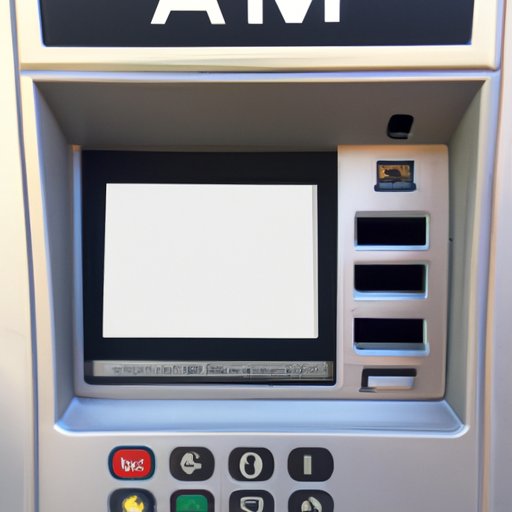
Can You Deposit Money at Any ATM?
Depositing money at an ATM can be a convenient way to manage your finances, but it can be challenging if you are not familiar with the process. As a result, many people often wonder whether they can deposit money at any ATM. With this article, we aim to guide you through the steps of depositing money at any ATM confidently. We’ll also provide you with tips on maintaining security and avoiding common mistakes to make the process as smooth as possible.
A Step-by-Step Guide to Depositing Money at Any ATM
Depositing money at an ATM is as easy as withdrawing money. You need to insert your debit card into the slot and follow a series of simple steps. First, select the option to make a deposit, and the screen will prompt you to enter the amount you wish to deposit. Choose the account you want to deposit the money into, place the cash or checks in the designated feeder, and click “deposit”. The device will verify and confirm the deposit amount.
The process may vary based on the type of ATM you are using. Envelope-free ATMs do not require you to place the cash or checks in an envelope. Instead, the ATM scans and counts the cash and verifies the checks for deposit. On the other hand, envelope deposit ATMs require you to place the funds in a designated envelope, which usually comes with a place to complete the relevant details like deposit account, branch, and account holder’s name.
The Benefits of Depositing Money at an ATM Instead of a Bank Teller
ATMs are convenient, as they provide access to your bank account 24/7, including weekends and after business hours. By depositing cash and checks using an ATM, you avoid potential long lines at bank branches and the teller’s transaction fees, which usually range from $2-5 per transaction.
Tips and Tricks for Successful ATM Deposits
Before going to an ATM, ensure you have the necessary materials to complete the transaction successfully. Gather your debit card, checks, cash, pen, and deposit envelope or slip, if required. Ensure your cash is flat or straightened out to avoid jamming the ATM. After confirming the deposit amount and account, double-check that you have entered the correct figures. If you are using an envelope ATM, verify that the details on the envelope match the details entered on the screen.
The Different Types of ATMs and How They May Affect Your Deposit
ATMs vary based on the type of currency they accept, the number of slots for deposits and their functionality. Ensure that you use a machine that supports your local currency and denomination. ATMs that accept cards from different banks may have transaction fees, so check with your bank regarding the charges before making a withdrawal or another type of transaction.
The Importance of Verifying the ATM’s Deposit Acceptance Before Inserting Money
Before inserting cash or checks, verify that the ATM accepts deposits. Most ATMs have clear signs indicating their deposit functions. Additionally, look out for warnings and alerts that may show the device is out of service or not receiving deposits. If possible, start with a small deposit first to ensure that the machine is functioning correctly.
Best Practices for Security When Depositing Money at an ATM
While depositing money in ATMs may be convenient, it is essential to ensure your safety. Choose an ATM that is in a well-lit area, and check for suspicious-looking individuals nearby. Ensure that your PIN and account information are private by covering the keypad as you type, and don’t let anyone else see the transaction. After completing the transaction, ensure you take your card, receipt, and cash or checks before leaving the machine.
Common Mistakes to Avoid When Depositing Money at an ATM
Avoid depositing cash and checks together as this may confuse the machine and delay the transaction. Make sure to endorse checks before depositing in an envelope. Not doing so may lead to the bank rejecting the deposit, and you may lose the funds, or you might have to complete the entire process again. Always double-check your deposit before leaving the ATM, as errors may cause unnecessary complications or delays.
Conclusion
Depositing money at an ATM can seem complex, but it’s quite simple once you understand the process. By following the above steps, you can confidently deposit funds at any ATM. Remember to verify that the ATM accepts deposits, gather all necessary information before going, and double-check your deposit before concluding the transaction.




